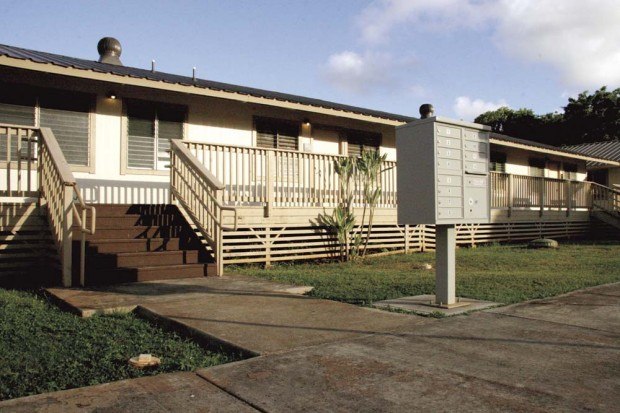LIHU‘E — Putting an end to homelessness is a moral imperative, says Gov. Neil Abercrombie, and he is making it one of the top priorities of his administration, according to his 90-Day Plan on Homelessness in Hawai‘i released on May
LIHU‘E — Putting an end to homelessness is a moral imperative, says Gov. Neil Abercrombie, and he is making it one of the top priorities of his administration, according to his 90-Day Plan on Homelessness in Hawai‘i released on May 17.
One of the specific objectives of the plan is to “identify and assess people who are chronically homeless for immediate services in Waikiki and the urban core of Honolulu,” a state press release indicated in May.
But how does the governor plan to help approximately 600 homeless people throughout Kaua‘i?
“The only thing that I know of it is that I got an email from Marc Alexander requesting statistics on how many homeless persons we have assisted in our agency from April 26,” said Stephanie Fernandes, homeless and housing director at Kaua‘i Economic Opportunity, a local non-profit agency that the state established as a partner in the plan.
KEO provides many services to homeless. It receives a large chunk of its annual budget from the state government, in the form of grants, according to Fernandes, but as far as additional funding for the 90-Day Plan, the state has not provided any.
“This 90-Day Plan does not rely on any additional local government funds,” Abercrombie said in the report. “It will, however, seek the financial support and commitment of the private sector in matching government funds already budgeted to address homelessness.”
Fernandes said the state administration wants “to know how our efforts are as a partner to do the work that we have always done and continue to do to get homeless people off the street.”
The plan is coming to a close Monday. Sunday, the governor’s coordinator on homelessness Marc Alexander is supposed to provide results on the progress made in the last 90 days.
Other goals of the 90-day plan included supporting the chronically homeless and chronically mentally ill, identifying available substance abuse treatment services and gaps in services, providing outreach to homeless people as early as possible, coordinating community efforts to maintain clean public areas, ensuring that existing shelters are maximized for capacity and service, providing information about relocation and financial planning to individuals and families outside of Hawai‘i who inquire about the availability of services, establishing the State Interagency Council on Homelessness and educating the general public about the most effective means to eliminate homelessness.
Mayor Bernard Carvalho Jr. is the Kaua‘i representative for the Council on Homelessness.
“The 90-Day Plan is a single step in a longer journey for our ultimate goal of ending homelessness,” Sophina Placencia said last month in a state press release. Placencia is the executive director of Wai‘anae Community Outreach, a community provider who helped formulate the plan.
So far, the state has been directly responsible for ending homelessness on Kaua‘i — in a state-owned building in Lihu‘e. Last week, following plans to renovate the old Courthouse Building in Lihu‘e, the state boarded-up the building’s porch, where homeless people had congregated for shelter since a contract between the state and KEO ended in November 2009. The contract had lasted for two years, during which time KEO used the building to provide shelter to homeless families.
Assistance
An emergency shelter in Lihu‘e, operated by KEO gives a few homeless a temporary roof.
“We’re only permitted to take up to 19 people per night, so it’s very small and limited, and it’s on a first-come, first-serve basis,” said Fernandes, adding that the building can only serve as an emergency shelter. “It’s not some place where people can continually stay up. It’s generally up to six weeks, which is 42 nights.”
The shelter is open daily from 5 p.m. to 7 a.m., and guests are accepted between 5 and 8 p.m.
KEO also assists the homeless with the Care-A-Van program four days a week.
“The Care-A-Van is a mobile unit providing services on-site where homeless congregate,” states the KEO website.
Fernandes said the program assists homeless people in referring them to other services, such as food stamps, medical insurance, financial aid and social security benefits.
Besides those programs, KEO also has “many, many services,” said Fernandes, adding that help may be just a phone call away.
She said KEO estimates that there are about 450-600 homeless on Kaua‘i, but that number fluctuates a lot.
“Some years we can have a high number, some we can just average about 600,” Fernandes said. “It really varies every year, month to month even.”
Each month the Care-A-Van worker sees about 20-25 new homeless registering for services, she said.
“We also know that there are what we call the hidden homeless,” Fernandes said. “Those people have no home of their own and right now are crashing from house to house; friends, family anyone that would allow them to spend a few nights here and there.”
The homeless problem in Hawai‘i is not new. The state in September 2004 prepared a Hawai‘i Policy Academy on Chronic Homelessness, complete with background, guiding principles, goals and an action plan.
Yet, homelessness has not ended.
“Will we ever see the end? Probably not,” Fernandes said. “Homelessness is such a complicated situation. It involves things like the economy where people can’t get jobs. It can involve people who have substance abuse as well as people who have mental illness and other health issues. Maybe there are some people who live on a fixed income. It’s really, really hard.”
Visit www.keoinc.org or call 245-4077 for more information.


